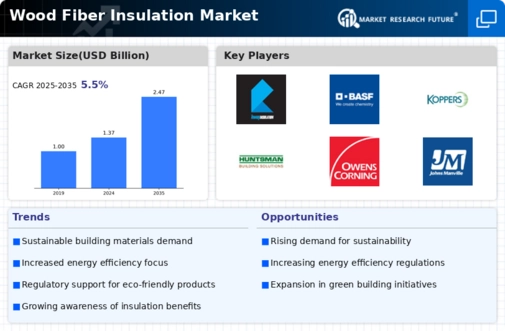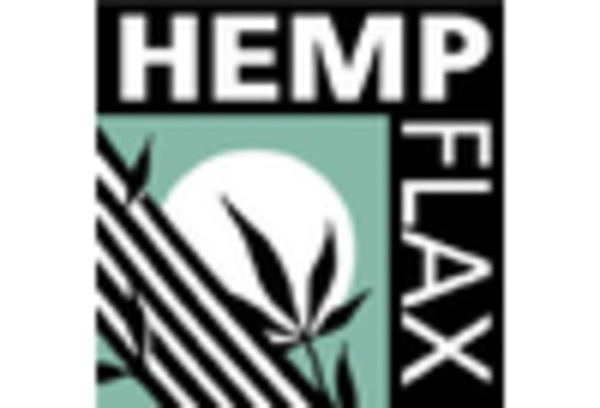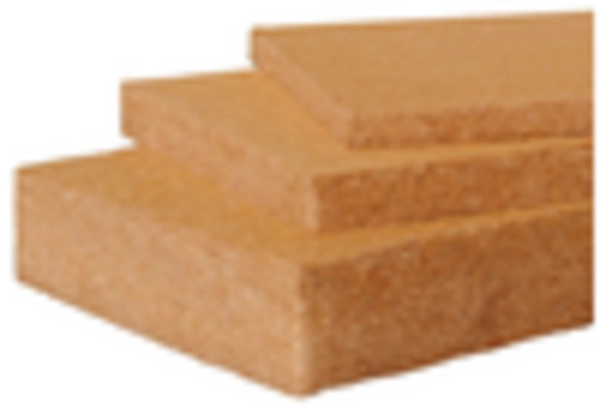Growing Construction Sector
The Wood Fiber Insulation Market is poised for growth due to the expansion of the construction sector. As urbanization continues to rise, there is an increasing demand for residential and commercial buildings, which in turn drives the need for effective insulation solutions. Wood fiber insulation, with its favorable properties, is becoming a preferred choice among builders aiming to meet energy efficiency standards. Recent data suggests that the construction industry is expected to grow at a rate of 6% annually, which will likely bolster the demand for wood fiber insulation products. This growth presents a significant opportunity for manufacturers and suppliers within the wood fiber insulation market.
Energy Efficiency Regulations
The Wood Fiber Insulation Market is significantly influenced by stringent energy efficiency regulations being implemented across various regions. Governments are increasingly mandating higher energy performance standards for buildings, which necessitates the use of effective insulation materials. Wood fiber insulation, known for its excellent thermal performance, plays a crucial role in meeting these regulations. As a result, the market is witnessing a surge in demand, with estimates suggesting that the insulation sector could see a growth of around 10% in response to these regulatory changes. This regulatory support not only drives the adoption of wood fiber insulation but also encourages innovation in insulation technologies.
Technological Innovations in Production
The Wood Fiber Insulation Market is witnessing advancements in production technologies that enhance the performance and cost-effectiveness of wood fiber insulation. Innovations such as improved manufacturing processes and the development of new binding agents are making it possible to produce insulation that is not only more efficient but also more affordable. These technological advancements are likely to attract a broader range of consumers, including those in the construction sector looking for high-performance insulation solutions. Market analysts predict that these innovations could lead to a 12% increase in the adoption of wood fiber insulation products in the coming years, as builders seek to optimize both cost and energy efficiency.
Rising Demand for Eco-Friendly Materials
The Wood Fiber Insulation Market is experiencing a notable increase in demand for eco-friendly building materials. As consumers and builders become more environmentally conscious, the preference for sustainable insulation options rises. Wood fiber insulation, derived from renewable resources, aligns with this trend, offering a biodegradable alternative to traditional insulation materials. Market data indicates that the demand for sustainable insulation solutions is projected to grow at a compound annual growth rate (CAGR) of approximately 8% over the next five years. This shift towards eco-friendly materials not only supports environmental goals but also enhances energy efficiency in buildings, making wood fiber insulation a preferred choice among architects and builders.
Increased Awareness of Indoor Air Quality
The Wood Fiber Insulation Market is benefiting from a growing awareness of indoor air quality (IAQ) issues. Consumers are becoming more informed about the health impacts of building materials, leading to a preference for non-toxic and breathable insulation options. Wood fiber insulation is recognized for its ability to regulate humidity and improve IAQ, making it an attractive choice for residential and commercial buildings. Market Research Future indicates that the demand for insulation materials that contribute to better IAQ is expected to rise, potentially increasing the market share of wood fiber insulation by 15% over the next few years. This trend underscores the importance of health-conscious building practices.

















